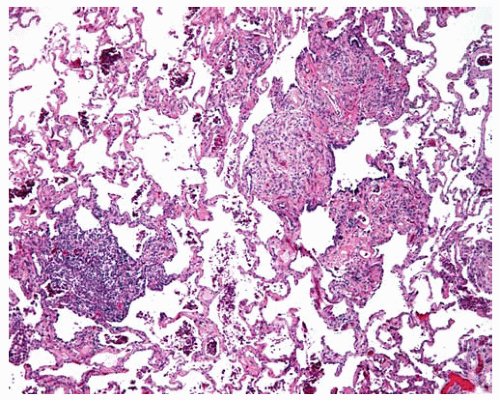Non-Langerhans-Cell Histiocytoses
Non-Langerhans-cell histiocytoses include a myriad of histiocytoses, many of which have primarily cutaneous manifestations. The following have been described in the lung.
Part 1 Erdheim-Chester Disease
Timothy C. Allen
Erdheim-Chester disease is a rare nonfamilial histiocytic disorder of unknown etiology. It primarily affects adults middle-aged and older, and bone pain is the most common presenting symptom. It has characteristic long-bone radiographic findings, namely, sclerotic changes in the diaphyses and metaphyses. Approximately half of cases have involvement of nonosseous tissue, and lung involvement occurs in approximately 20% of cases. Differential diagnosis includes pulmonary Langerhans-cell histiocytosis, Rosai-Dorfman disease, and usual interstitial pneumonia.
Histologic Features
Accumulation of foamy or clear histiocytes with variable amounts of associated fibrosis and a variable lymphoplasmacytic infiltrate.
Histiocytes and associated fibrosis and inflammation lie in a characteristic lymphangitic distribution: subpleural, intralobar septal, and bronchovascular.
Generally immunopositive for CD68 and factor XIIIa and immunonegative for CD1a; S-100 immunostain is variably positive.
 Figure 30.1 Lymphangitic distribution of histiocytes with associated fibrosis and inflammatory cells.
Stay updated, free articles. Join our Telegram channel
Full access? Get Clinical Tree
 Get Clinical Tree app for offline access
Get Clinical Tree app for offline access

|